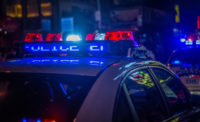Flash Mob Crimes: Twitter That!

An emerging methodology with technological roots – flash mobs – enables individuals using social networking sites (e.g., Facebook.com, Twitter.com, or Meetup.com), instant messaging and email to gather at a particular location, date and time and carry out legal or criminal activities (e.g., sabotage, robberies, and beatings). While the majority of flash mobs have somewhat humorous characteristics, increasingly, flash mobs have been an instrumentality of crime. Criminal flash mobs are another example of the conjoining of illicit activities with technologies, such as cyber-based identity theft, online fraud and Internet-induced extortion, to name a few.
To better appreciate the nature of criminal flash mobs or “flash robs,” consider the following:
- August 2011 – In less than one minute, nearly 30 young adults ransacked a 7-11 store in Germantown, Md., damaging property and stealing snacks and candies, and then leaving the premises.
- July 2011- Nearly 20 teenagers ransacked a Redford Township, Mich., gas station, damaging property and stealing merchandise.
- June 2011- Several dozen individuals descended upon a Sears store in Upper Darby (outside Philadelphia) and looted various apparel items. Police apprehended some members of the group and charged them with conspiracy and retail theft.
- May 2011 – A group of individuals raided a Dunkin-Donuts in Greenwich Village, NYC, throwing chairs, climbing over the counter, damaging property and stealing merchandise.
- April 2011- About 20 young adults amassed at G-Star Raw, a clothing retailer, in Washington, D.C., and took some $20,000 worth of merchandise before leaving. Police arrived 20 minutes later.
- January 2011 – In Chicago, 11 teens looted several retailers – Armani Exchange, North Face and Filene’s Basement – stealing several thousands of dollars of merchandise.
Unfortunately, not only are “flash robs,” occurring nationwide, but also flash-triggered riots, including some with hate-based elements, have taken place, including:
- August 2011 – At the Wisconsin State Fair in West Allis, several African-American young adults undertook racially motivated attacks against whites outside the fairgrounds because they were “easy targets”. The alleged perpetrators will be charged with hate crimes
- June 2011 – A group of some 60 African-American young adults marched through a Peoria, Illinois, neighborhood, yelling threats to white residents, including the need to kill such residents.
Analogously, extremists and terrorists are fond of online social networking sites since the technologies enable them to interact with many individuals simultaneously, thereby hastening radicalization and recruitment. Racial, religious, and nationality-oriented social networking sites (such as NewSaxon.org) exposed radical precepts in affinity-linked online communities. Some extremist and terrorist groups utilize these methodologies to communicate, organize, project their propaganda, target their adversaries, and broadcast previous activities.
Given the rising frequency of self-selected radicals across broad ideological perspectives (e.g., jihadists, anti-globalization, anti-government, ecoterrorists), it is not surprising that social networking sites would be used to initiate criminal flash mobs, with a politically motivated taint. Particularly troublesome is that such technologies facilitate otherwise unaffiliated individuals to amass against targets in a rapid manner with often significant vulnerability to prospective victims. Small, fringe elements of the “Occupy Wall Street,” have undertaken criminal flash mob activities in terms of property damage of businesses and violent confrontations with police.
In light of the threats of criminal flash mobs, government and industry have forged various responses. As a way to stem criminal flash mob activities, lawmakers have proposed and instituted evening curfews for individuals under 18. Some city councils have discussed the possibility of criminalizing flash mobs through interdictions on the use of social media networks in conjunction with off-line protests.
Law enforcement has heightened its monitoring of social media networks, reassessed their responses to criminal flash mobs, and reduced 911 response times in efforts to undermine this growing criminal modus operandi. Cities have temporarily stopped cellular phone service on mass transit systems in order to undermine prospective criminal flash mobs. Attempts to combat criminal flash mobs by impeding access to various technologies have raised possible freedom of speech and freedom of assembly challenges.
The private sector, particularly retailers, has reviewed protocols regarding preventing, responding and reporting flash mob criminal incidents. We have a better understanding of the negative consequences of such crimes, including possible liability for workers and customers hurt during such incidents. In light of such threats, security products and services – electronic surveillance; mapping, anti-theft, and video technologies; alarm systems; and security guards – plus training of security and other employees merit further attention.
While it is premature to predict the ubiquity of future criminal flash mob activity, this melding of technology and criminality will likely spread as it affords perpetrators ease of use, increased efficiency and potency and builds upon our increased reliance and embracement of online and telephonic communications. Yet, the attributes contributing to the growth of criminal flash mobs likewise enable law enforcement and industry to utilize existing and nascent technologies and practices to combat this challenge. With proper resolve, government and industry can craft solutions to deter, defend and respond to this technologically infused criminal phenomenon.
Looking for a reprint of this article?
From high-res PDFs to custom plaques, order your copy today!






